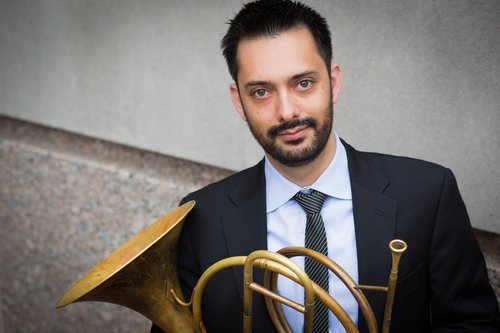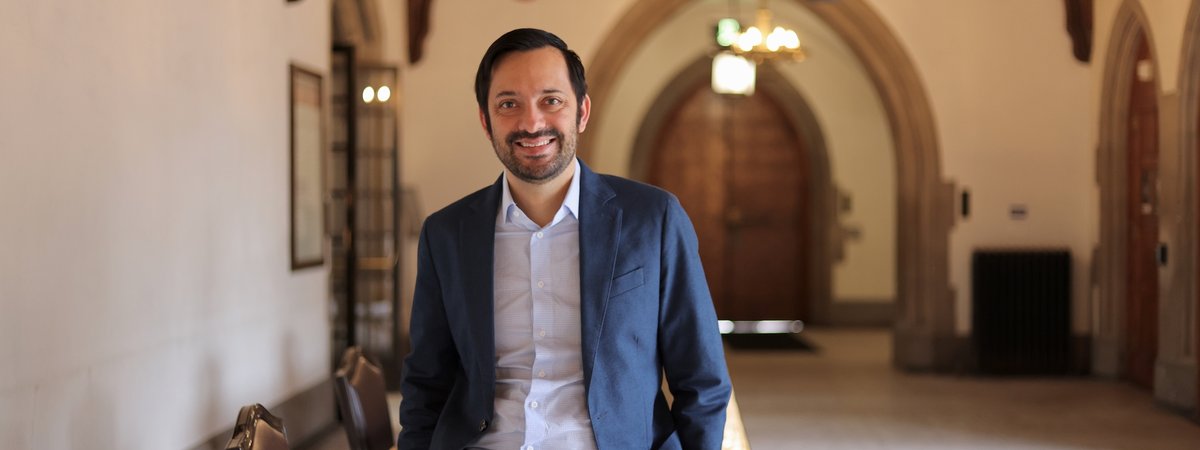Can you provide a brief introduction to yourself, including your academic background and area of research?
I’m coming to U of T from a previous faculty position at University of Illinois. I’m originally from California; I did my undergraduate work at Northwestern University, went to MIT for a Ph.D., and then did postdoctoral fellowships at Princeton and University of Chicago. I’m a theoretical particle physicist, and my main area of research is looking for dark matter (it’s 80% of the mass of the universe and we have no idea what it is!). Recently I’ve gotten interested in studying neural networks and artificial intelligence more broadly from the perspective of physics.
Could you share some details about your current interests and any specific projects you are working on?
I’ll give two examples to illustrate the different kinds of work that I do.
- I’m working with condensed matter physicists at University of Illinois, chemists at MIT, and dark matter experimentalists at Fermilab to develop a new dark matter detector made out of an organic compound called trans-stilbene. This is basically a fancy kind of plastic where if you shine light on it or bombard it with electrons (or dark matter), it glows. We can capture the light in a device similar to the one in your phone camera, one photon at a time, and look for variations in the rate over the course of the day as the Earth rotates with respect to the “wind” of galactic dark matter coming at us from the direction of the Cygnus constellation. We’re hoping that once we develop a prototype, we can work with EHEP [experimental high energy physics] professors Ziqing Hong and Miriam Diamond here to deploy it and take first data in the next few years.
- The most precise measurement of a fundamental particle humanity has ever made is the magnetic moment of the electron, which we know to 13 decimal places. The wizards who measure this quantity by trapping a single electron in a box (Gerald Gabrielse and his team at Northwestern University, and Xing Fan at Harvard) want to push to even more precision, but the leading source of uncertainty will be a quantity that can’t be directly measured, only calculated: the effect of the walls of the box on the quantum energy levels of the electron. This calculation is a beautiful bit of early 20th-century physics with some subtle twists, and has actually informed the way I plan to teach quantum mechanics and quantum field theory.
What is your approach to teaching, and are there specific teaching methods or philosophies you are particularly passionate about?
I think teaching works best when the students are actively engaged: I love getting interrupted by questions during a lecture, and I am a big fan of hands-on assignments such as coding projects or open-ended research in addition to the standard problem sets. I find that writing my own notes on the course material from scratch helps me solidify my understanding and presentation of the material. Quantum field theory in particular is a tricky subject to teach: one of my favorite textbooks makes the point that, unlike every other core physics subject, field theory has been around for almost 100 years but every book takes a completely different approach, which means we still don’t know how to teach it! I’ve been toying with the idea of writing a book on the subject myself, but I think this will be a post-tenure project.
Are there any interdisciplinary or collaborative initiatives you are interested in pursuing within the department?
I’m really interested in forging collaborations with the Vector Institute, where I’m a faculty affiliate in addition to my appointment in the Physics Department. U of T has been at the forefront of artificial intelligence research for decades -- many of the cutting-edge advances which power ChatGPT were developed by U of T students or postdocs -- and it’s a wonderful ecosystem to join. Many developments in modern AI (for example, diffusion models for image generation, or symmetry-equivariant networks) were loosely inspired by physics, and physics – which has a long history of extracting useful predictions from complex systems with enormous numbers of degrees of freedom – can be used to understand pieces of what is happening inside large AI models. I think many in the AI field would agree that safe and responsible AI is a crucial goal, and to the extent that better understanding and interpretability lead to better safety, I think physics can play a very useful role.
In what ways do you hope to make an impact within the department and the broader academic community?
This is a very interesting time for physics and society. On the one hand, we have a spectacularly successful theory of particle physics which can predict the result of basically any experiment ever performed on Earth to fantastic accuracy. On the other hand, we know that dark matter exists, but we’ve never seen it on Earth, and the key to its identity may be found in astrophysical data. On a parallel track, artificial intelligence is poised to completely change how we live and work over the next decade, but we still don’t understand fundamental things about how neural networks make their predictions. I am excited to try to unify all of these perspectives: using physics to understand AI better (and to teach AI from a physics perspective), and then to exploit that improved understanding in order to harness AI to do better physics. This has the potential to strengthen connections within the Physics Department, as well as establish collaborative relationships with statistics, computer science, and the Vector Institute.
What advice would you offer to students who are interested in pursuing a career in teaching?
It’s a bit cliché, but true: the best way to find out if you know something is to teach it. A career in teaching really lets you improve your own understanding of the subjects you teach every time you teach them! In addition, the “aha” moment when a mathematical manipulation or a physical insight suddenly “clicks” for a student is incredibly rewarding to witness. My most generally applicable piece of advice is to think back to the things that confused you the very first time you saw a particular subject (I still remember the visceral feeling of bafflement when I first saw the equation 𝑥̂ |𝑥 ⟩= 𝑥 |𝑥 ⟩ in quantum mechanics), recognize that your students will likely be confused by a similar thing, and try to use your accumulated knowledge to ease them through those conceptual roadblocks.
Are there any lessons from your own academic journey that you would like to share?
Getting an academic job in physics is part research, but part performance: the way you give a job talk, the way you interact with prospective graduate students, the 1-on-1 conversations with other faculty members, all of these are what actually make the difference at the end of the day. Your research will get you an interview, but your interpersonal skills will actually land you the job. Give lots of practice talks!
What drew you to join our department, and what aspects do you find most appealing or unique?
One of the best things about the Physics Department at U of T is the incredible strength in experimental particle physics, especially dark matter. The best underground lab in the world is SNOLAB in Sudbury, and several U of T professors are directly involved in experiments there. A main part of my research program is proposing new experiments to search for dark matter, and I am very excited for the collaborative possibilities there.


